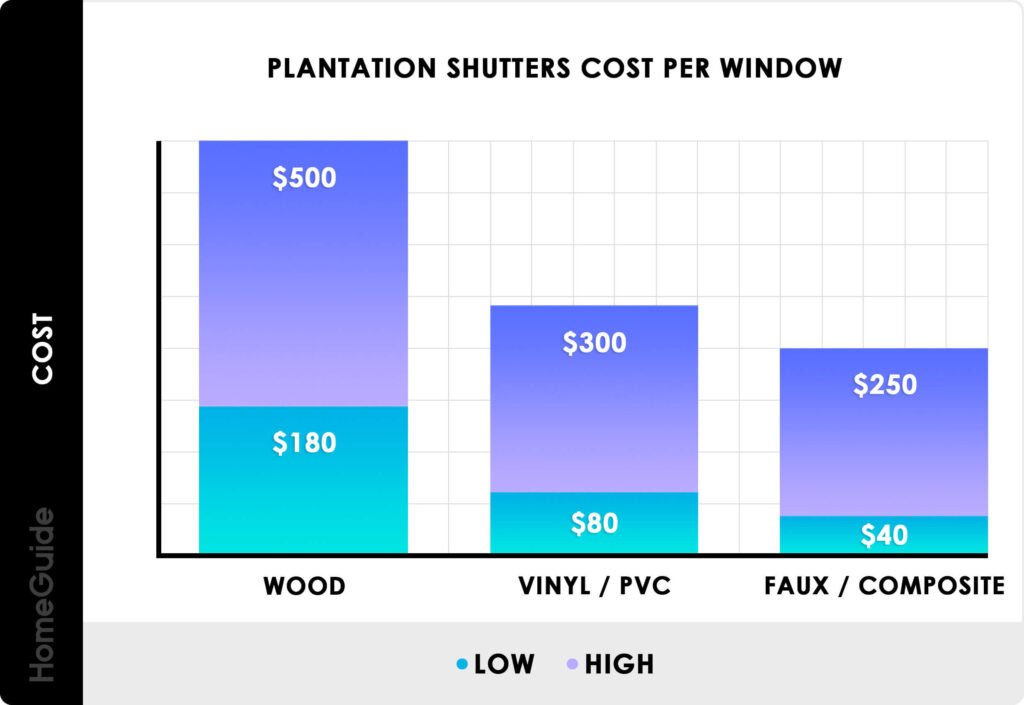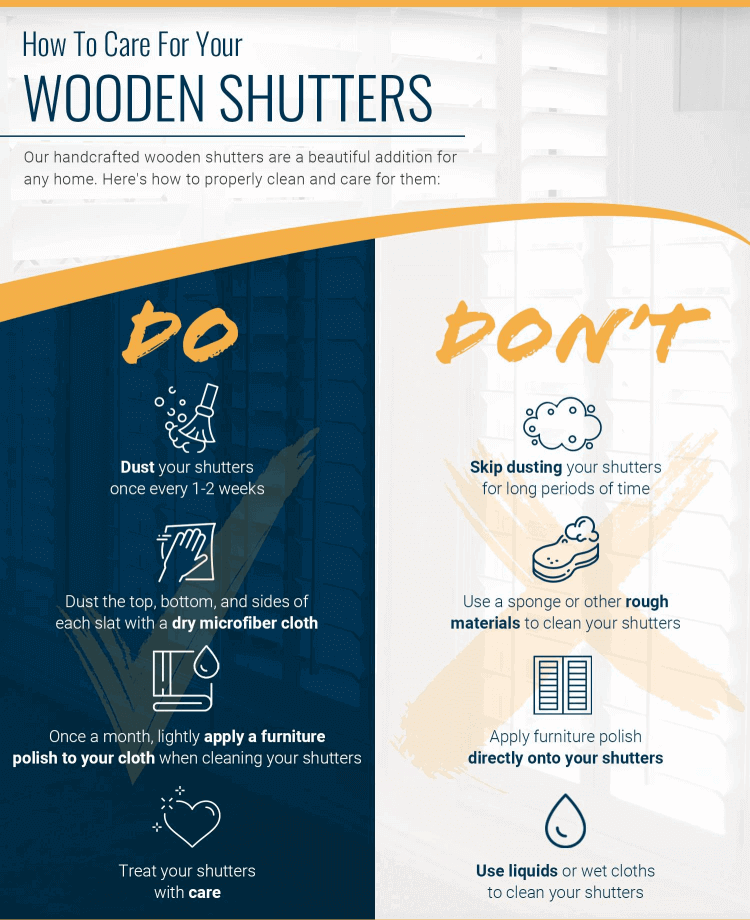The Best Material for Plantation Shutters
Plantation shutters are a type of window covering that can be both functional and decorative. Plantation shutters, in particular, are becoming increasingly popular in modern homes. Interior designers often choose them for their simple but sophisticated look. Shutters are a popular choice for many homeowners because they come in a variety of materials, styles, and sizes. Louvered shutters can be opened and closed to adjust the amount of natural light coming into a room, and also provide privacy when needed.

Types of Plantation Shutters Material
Plantation shutters are an elegant and stylish way to control light and airflow in your home. They are made from a variety of materials, including wood, PVC, or composite, and can be customized to match any decor. Whether you want a classic look or something more modern, shutters are a great option for any home. Wood shutters are classic and elegant, while PVC shutters are more affordable and easy to maintain. Composite shutters offer the best of both worlds, combining the beauty of wood with the durability of PVC.
Wood Plantation Shutters
There’s something about natural wood plantation shutters that just can’t be beaten. They’ve been around for centuries and continue to be a popular choice among shutter manufacturers today. When it comes to interior shutters, there are a few popular wood species that homeowners go with. Each type of shutter has a different look and feel, whether it’s the deep grain of white ash or the smooth surface of plantation-grown poplar. No matter what your budget may be, there’s sure to be a wooden shutter option that’s perfect for you.
Not sure which wood to get? Here are the five most popular wood species used in shutters.
Pros
- Natural aesthetics. Plantation shutters have a unique grain pattern that creates a beautiful look that can complement any home décor.
- Customizable colors. Wood shutters offer an array of colors to choose from, making it easy to find the perfect match for your home’s interior.
- Add value to the home. Wooden shutters can significantly increase the value of your home. Their long lifespan makes plantation shutters a wise investment that will pay off in the long run.
- Strong and lightweight. Wooden shutters are not only stronger but also lighter in weight. This makes them a more durable choice that can accommodate larger panel sizes without sagging.
- Great insulation. They offer great insulation to protect your flooring and upholstery from being faded by the sun. Shutters can help reduce heat loss by as much as 14% than other types of window treatments.
Cons
- The price is higher. Plantation shutters made from natural wood are the most costly option on the market. The high price tag is due to the expense of sourcing and crafting the wooden shutters.
- Limited use. They might not be the best choice for rooms that get a lot of moisture, such as bathrooms, kitchens, and laundry rooms. The heat and steam from these rooms can cause the wood to warp over time.
- Need regular maintenance. Regular care and maintenance are necessary to keep your wood shutters in top condition. You may also need to stain or paint them every ten years or so.
PVC Plantation Shutters
Hollow PVC, solid PVC, and solid aluminum reinforced PVC shutters. While they may have different names, all of these shutters are made from synthetic materials designed to look like wood. Hollow PVC shutters are lightweight and easy to install, while solid PVC shutters are more durable. Solid aluminum-reinforced PVC shutters are the most sturdy option, but also the most expensive.
Pros
- Cost a lot less. PVC shutters are the least expensive of the shutter options that can help you save 20-40% cost compared to wooden shutters, but they still provide the same benefits.
- Moisture-resistant. They are made from high-density polyurethane material with great stability and durability. They will not crack, warp, or chip; they won’t fade or yellow with age and they won’t absorb moisture, protecting against water damage. You can use them in bathrooms and kitchens, areas where timber is not typically used.
- Easy to maintain. You can simply wipe them down with a damp cloth to remove any dirt or debris that has accumulated on their surface. Additionally, they are also stain-resistant, making them ideal for use in areas where spills are likely to occur.
- Energy efficiency. By blocking out the sun’s hot rays in the summer, your home will stay cooler and use less energy for air conditioning. In the winter, PVC shutters can keep the cold air from coming into your home and help reduce your heating bills.
Cons
- Limited colors. PVC shutters are only available in a range of white colors. Some homeowners may prefer the classic look of white shutters. However, some may have difficulty finding the perfect color match for their trim or other furniture.
- Heavyweight. PVC shutters are much heavier than wood shutters. This weight can cause problems with the frame and hinges and may cause the panels to sag for extremely large windows.
- Limited panel sizes. A PVC shutter will typically be smaller in size than a wood shutter, due to the weight of the material. Therefore, you may need more panels to cover a window opening.
Composite Plantation Shutters
Composite shutters are made of a mixture of medium-density fibreboard (MDF), faux wood, and real wood. This combination results in a much stronger material that is covered with a protective layer of PVC. The mix of both materials offers it a few advantages over both the other options. They are an excellent choice for any home, especially in damp or humid locations. They are durable, moisture resistant, and have a sleek look with a smooth finish. Prices for these shutters tend to be very reasonable.

Pros
- Cost. Composite shutters are more budget-friendly than wood, yet still provide a clean and polished look, making them a great option for budget-minded homeowners.
- Moisture-resistant. Composite shutters are more resistant than real wood shutters. The wood inside composite shutters is kept protected by a layer of PVC, so it stays strong no matter what conditions it’s kept in.
- Easy to maintain. You can simply wipe them down with a damp cloth to remove any dirt or debris that has accumulated on their surface. Additionally, they are also stain-resistant, making them ideal for use in areas where spills are likely to occur.
Cons
- Limited colors. Composite shutters have their benefits, but they are somewhat restricted. They come premade and cannot be customized to your home’s specifications in terms of color.
- Durability. They are designed to mimic the look of traditional wooden shutters but without the same level of durability.
- Heavyweight. Composite shutters are made from a combination of materials, typically wood and plastic. Heavier than wood shutters, they may require extra support in the form of divider rails, at lower panel heights.
How to Choose the Right Material for Your Shutters
Plantation shutters come in a range of different materials, with real wood, composite, and PVC as the most popular choices. All three options have various features that make them ideal for modern homes. However, when it comes to choosing the right plantation shutters for your specific needs, the decision can be difficult. Here are five tips to help you choose the best plantation shutter material for your needs:
Budget
When choosing shutters for your home, the budget will play a big role in limiting your options. Real wood shutters are generally more expensive than composite or PVC shutters because wood is a natural resource, and manufacturing wooden shutters can be costly due to the lengthy and laborious process. However, composite and PVC shutters are made artificially and tend to be more affordable than their wooden counterparts. So, depending on your budget, you may sacrifice some aesthetics for cost-effectiveness.

Aesthetics
There are many reasons why real wood is the better choice when it comes to window shutters. Not only is it more aesthetically pleasing, but it is also more durable and long-lasting. The most noticeable difference between real wood and faux wood shutters is that real wood shutters can come in a wider variety of colors. They can also be sanded and stained to create different colors and textures, giving you more options when decorating your home. While PVC or composite shutters give you what you see, they are more limited in color options.

Size
When deciding on shutter material, size is an important consideration. Small shutters give you more leeway in terms of what will work well. Both wood, PVC, and composite shutters can be good choices for small shutters. However, larger shutters need more stability and durability, which limits your options to materials such as wood. Wood is much stronger and lighter than PVC or composite material, so it is a good choice for large shutters. PVC and composite Shutters may warp and sag over time, so they are not as ideal for large shutters.
Climate
Any material you choose for your shutters will work fine when you live in drier climates. PVC and composite shutters are the best choices for humid climates where condensation gathers, such as in your kitchen or bathroom. These materials are highly resistant to humidity and wet weather, making them ideal for areas where condensation commonly forms, such as kitchens and bathrooms. Wood shutters can start to rot in damp climates, so regular maintenance is necessary to keep them in good condition.

Maintenance
Although wooden shutters can add a lot of character to a home, they require more maintenance than composite or PVC shutters. Wooden shutters are susceptible to mold, pests, and moisture, so you’ll need to regularly check and clean them to keep them in good condition. Composite and PVC shutters are made of a plastic-based material that is less likely to mold or decay over time and can be easily cleaned with just a wipe-down.

Comments
Post a Comment